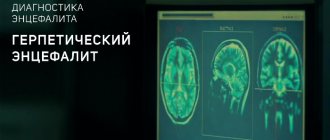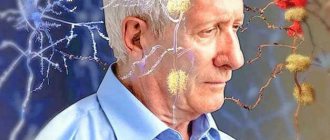The leading cause of viral encephalitis in Asia is Japanese encephalitis virus (JEV). This mosquito-borne flavivirus belongs to a genus of viruses that also includes dengue, yellow fever, and West Nile viruses. The first case of JE was reported in Japan in 1871.
The annual clinical incidence of this disease varies between and within countries, ranging from <1 to >10 per 100,000 population or higher during outbreaks. A recent literature review estimated that nearly 68,000 clinical cases of JE occur annually worldwide, with deaths from the disease ranging from 13,600 to 20,400 cases. JE mainly affects children. Most adults in endemic countries have natural immunity from childhood infection, but the disease can affect people of any age.
Signs and symptoms
Most cases of JE virus infection are mild (with fever and headache) or no obvious symptoms, but about 1 in 250 cases of infection is severe. The incubation period ranges from 4–14 days. In children, the most common initial symptoms of the disease may be pain in the lower abdomen and vomiting. The severe form is characterized by rapid development of high fever, headache, neck stiffness, disorientation, coma, spasms, convulsions, spastic paralysis and possible death. Among symptomatic individuals, the case fatality rate can be as high as 30%.
Among survivors, 20-30% suffer from persistent cognitive, behavioral or neurological problems such as paralysis, recurrent convulsions or loss of speech.
Japanese (mosquito) encephalitis
The incubation period of the disease is from 5 to 15 days. The disease begins suddenly with rapidly increasing general infectious symptoms. At the same time, many patients can name the exact time of the onset of their disease. At the same time, 1-2 days before the development of the manifest form of the disease, prodromal phenomena may be observed in the form of rapid fatigue, general weakness, drowsiness, decreased performance, etc. Diplopia, decreased visual acuity, speech disorders, and dysuric disorders are sometimes encountered. On the first day of illness, febrile fever occurs, reaching a maximum (up to 41°C) by the second day and lasting for 7-10 days. This is accompanied by a feeling of heat or tremendous chills, a sharp headache, vomiting, severe malaise, weakness, staggering, myalgia, flushing of the face and conjunctiva, bradycardia, alternating tachycardia, tachypnea. Often, against the background of deepening cerebral symptoms, a coma and petechial exanthema develop. The development of a comatose state is accompanied by qualitative and quantitative changes in consciousness. Qualitative ones are manifested by confusion, delirious or amental states with delirium and motor agitation. Sometimes epileptic seizures occur. Quantitative changes in consciousness are characterized by stupor with somnolent features, stupor or coma.
Frequent signs of the acute period of Japanese encephalitis are myoclonic fibrillary and fascicular twitching in various muscle groups, especially on the face and limbs, and rough irregular tremor of the hands, which intensifies with movements.
In the clinical picture of the disease, several syndromes are distinguished, which can be combined with each other.
Infectious-toxic syndrome is characterized by a predominance of symptoms of general intoxication (febrile fever, bradycardia or tachycardia, tachypnea, shortness of breath, cough, flushing of the face and mucous membranes, icterus of the sclera, pain on palpation of the right hypochondrium, constipation, etc.) with a minimum of neurological disorders. The picture of peripheral blood shows an increase in ESR to 20-25 mm/h, an increase in the amount of hemoglobin and red blood cells, neutrophilic leukocytosis with a sharp shift in the leukocyte formula to the left, up to juvenile forms.
Meningeal syndrome occurs as serous meningitis. There are also convulsive, bulbar, comatose (90% mortality), lethargic, amentive-hyperkinetic and hemiparetic syndromes.
The severity of the disease and the polymorphism of its manifestations are determined by the characteristics of brain damage. The course of Japanese encephalitis is characterized by a short acute period. Symptoms of the disease reach their greatest intensity on the 3-5th day from the onset of the disease. Mortality is 40-70%, mostly in the first week of illness. The survivors recover very slowly, with prolonged asthenic complaints.
Complications . In the acute period, swelling of the brain and membranes, infectious-toxic shock, swallowing and breathing disorders with bulbar syndrome, coma with impaired vital functions occur.
Transmission of infection
24 countries in the WHO South-East Asia and Western Pacific Regions are at risk of JE transmission, affecting more than three billion people.
JE is transmitted to humans through the bite of infected Culex mosquitoes (mainly Culex tritaeniorhynchus). Once humans are infected, they do not develop sufficient viremia to infect mosquitoes when feeding. The virus exists in a transmission cycle between mosquitoes, pigs and/or waterfowl (enzootic cycle). The disease is mainly found in rural and suburban areas where people are close to these vertebrates.
In most temperate zones of Asia, Japanese encephalitis virus (JEV) is transmitted primarily during the warmer months, when large epidemics can occur. In tropical and subtropical areas, transmission can occur year-round, but in rice-growing areas it often increases during the rainy season and before harvest.
Symptomatic picture
The incubation period can take 5-6 days. Manifestation is preceded by a prodromal period. It includes:
- Increased fatigue.
- Drowsiness.
- Deterioration in performance.
- Brokenness.
- Speech disorders.
- Diplopia.
- Decreased vision.
- Dysuric disorders.
A few days later, the acute period of infection debuts. Symptoms include high fever. Hyperthermia reaches 41 degrees. Accompanied by fever, headache, sweating, unsteadiness of gait, muscle pain, aching in the lower back. Abdominal pain, nausea and vomiting are also noted. There is hyperemia of the face and neck. From the cardiovascular system, bradycardia is observed, turning into tachycardia. On the 3-4th day of Japanese encephalitis, signs of damage to the central nervous system appear against the background of an infectious-toxic syndrome.
Disturbances of consciousness characteristic of this disease include:
- Delirium with delirium and psychomotor agitation.
- Confusion.
- Amentia.
- Sopor.
- To whom.
Meningeal syndrome is accompanied by a characteristic posture, meningeal signs, and hyperesthesia. Hyperkinesis, convulsive attacks, oculomotor disorders, paresis and paralysis of the limbs according to the hemitype may be observed. Central paresis of the facial nerve, bulbar disturbances, and myoclonic twitching of various muscles occur. Tremor of the upper and lower extremities increases with movement. Hypersomnia is possible - pathological drowsiness, similar to a manifestation of lethargic sleep.
The disease has an acute course. The fever persists for about 10 days. In this case, the peak of symptoms occurs on the 3-5th day of the disease. During this time, one should be wary of the development of infectious-toxic shock, bacterial pneumonia, cerebral or pulmonary edema, sepsis, and pyelonephritis. As recovery progresses, the clinical picture reverses. But convalescence takes a lot of time. On average up to 2 months. Asthenia lasts especially long. Residual effects may occur.
Diagnostics
Persons who live in or have traveled to an area where JE is endemic and become ill with encephalitis are considered suspected cases of JE. Laboratory testing is required to confirm JE infection and exclude other causes of encephalitis. WHO recommends testing for JE-specific antibodies in a single cerebrospinal fluid (CSF) or serum sample using the IgM capture ELISA. Testing a CSF sample is preferred because it reduces the likelihood of false-positive results due to previous infection or vaccination.
Surveillance for this disease is primarily syndromic surveillance for acute encephalitis. Confirmatory laboratory testing is often performed at designated sentinel sites, and efforts are being made to expand laboratory-based surveillance. Case surveillance has been established in countries that are effectively combating JE through vaccination.
Prevention and control
Safe and effective vaccines against JE are available to prevent the disease. WHO recommends robust JE prevention and control measures, including immunization against JE in all areas where the disease is a recognized public health priority, along with strengthened surveillance and reporting mechanisms. Where the environment is favorable for transmission of JE virus, vaccination should be considered even if the number of confirmed cases of JE is small. Few data suggest that interventions other than human vaccination can reduce the burden of JE. Therefore, human vaccination should be given priority over pig vaccination and mosquito control measures.
There are 4 main types of JE vaccines currently in use: inactivated mouse brain cell vaccines, inactivated Vero cell vaccines, live attenuated vaccines, and live recombinant vaccines.
In recent years, the live attenuated vaccine SA14-14-2, produced in China, has become the most widely used vaccine in endemic countries and was prequalified by WHO in October 2013. Inactivated cell culture vaccines and live recombinant vaccines based on the yellow fever vaccine strain are also licensed and prequalified by WHO. In November 2013, the GAVI Alliance launched a funding channel to support JE vaccination campaigns in eligible countries.
All travelers to areas where Japanese encephalitis is endemic in Japan should take precautions against mosquito bites to reduce the risk of contracting JE. Personal prevention measures include using repellent, wearing long sleeves, mosquito coils and vaporizers. People traveling for extended periods of time to areas where JE is endemic are recommended to be vaccinated.
Prevention
Often, with mosquito encephalitis, it is necessary to take preventive measures. These measures include the prevention of the disease itself, as well as the prevention of complications and serious consequences for the body. It is important to carry out mosquito control methods.
This method of killing mosquitoes is based on the use of chemicals. Chemical preparations are designed for the following preventive measures:
- treatment of aquatic habitats for mosquitoes and their larvae;
- treatment of residential complexes when mosquitoes are detected;
- Personal means of protection against bloodsuckers.
By treating aquatic environments and the habitats of larvae, it is possible to eliminate mass infection with mosquito encephalitis. The same can be said about the treatment of residential complexes. Personal protective equipment requires special-purpose clothing.
Specific prevention of mosquito encephalitis is aimed at the use of vaccination. Moreover, it is most necessary to vaccinate in areas where mosquito-borne encephalitis is widespread. When a mosquito bites, serum is injected. This helps destroy the virus in human blood cells.
Most often, mosquitoes are killed using a DDT solution. It is also necessary to ensure safety in the living area. For this purpose, the following are installed in residential premises:
- grids;
- curtains over the bed;
- mesh devices for the face.
Mesh facial devices must be impregnated with certain chemicals. This makes it possible to achieve their death when mosquitoes settle. For this purpose, the following means are used:
- dimethyl phthalate;
- emulsion of five percent concentration of DDT;
- five percent creolin solution.
It is also worth highlighting the special conditions under which encephalitis mosquitoes spread most. These conditions apply to open air in the evening. Namely, after sunset.
go to top
Disease outbreaks
Major outbreaks of JE occur every 2-15 years. JE transmission increases during the rainy season when the vector population increases. However, there is still no evidence of increased JE transmission after major floods and tsunamis. The spread of JE into new areas is correlated with agricultural development and intensive rice cultivation using irrigation systems.
WHO is responding as follows:
- Formulates global recommendations to combat JE, including the use of vaccines. WHO recommends and supports immunization against JE in all regions where the disease is a recognized public health problem.
- Provides technical support for JE surveillance, JE vaccine introduction and large-scale JE vaccination campaigns, and evaluation of JE vaccine effectiveness and program impact.











